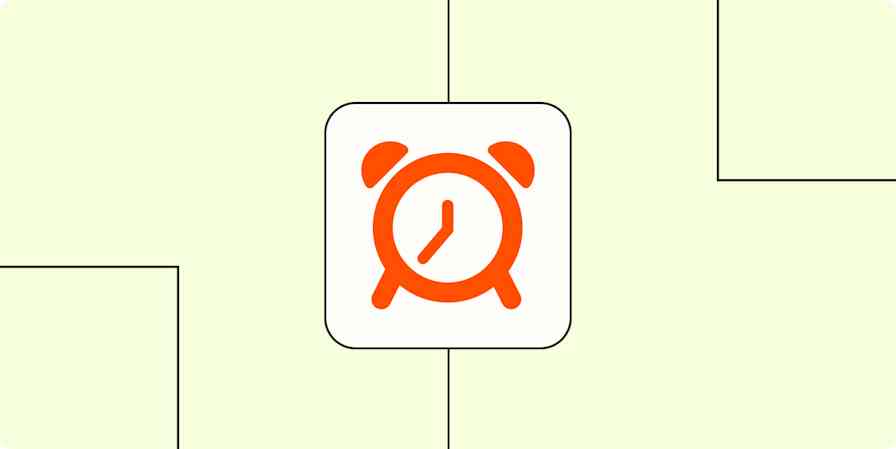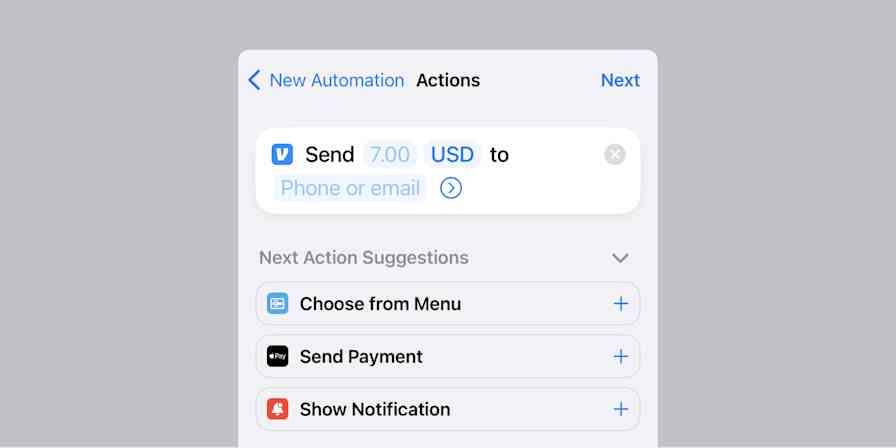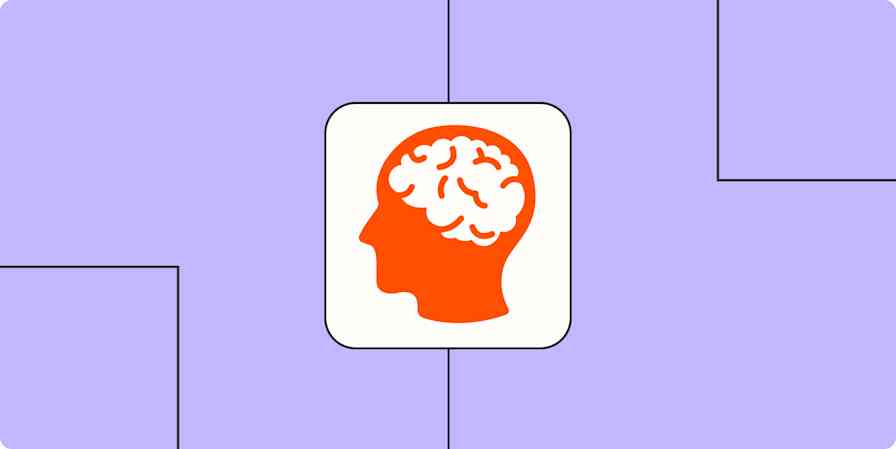Coming into full-time freelance writing over the past few years, I've had to double down on my productivity management. Many of the resources I see focus on "working smarter, not harder." But what does that even mean?
Working smart versus working hard is a matter of understanding how you work best and using that knowledge to optimize your work. So, I tapped into my experiences—and asked other folks about theirs—to give you actual tips on how to work smarter.
How to work smarter, not harder
Remember, working smarter is about personalizing the experience. If any of these tips don't make sense for you, skip right on to the next one.
1. Get organized with apps
If you feel overwhelmed with your day-to-day, try using a project management, to-do list, or time-tracking app to wrangle your daily tasks. (Or, if you already use one, experiment with new ones!) While adding another app to your system can feel like you're adding to your plate, finding the right app will actually lighten the load for you.
"One of the most helpful tools I use is a project management system, which allows me to organize and prioritize my tasks efficiently. I also use time-tracking software to monitor my progress and identify areas where I can improve my productivity," says DOPPCALL's Yasin Arafat.
At PhotoAiD, Tomek Mlodzki likes to use to-do apps for recurring tasks: "Almost everyone has some repetitive daily tasks. It's much easier and more time-efficient to use the to-do app for these recurring tasks. I can quickly add a task and set reminders so that I don't forget them, and create conditions for every task (e.g., repeat the task every Friday)."
Personally, it took me a while to find an organization app that stuck. I ended up choosing Notion because I can be as informal or organized as I'd like, like with this reference I made for my recent website revamp.
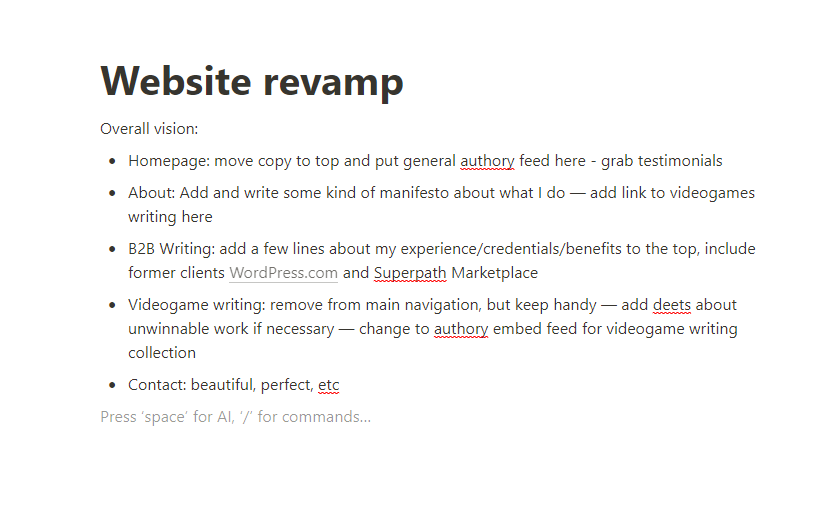
Don't be afraid to play around with apps until you find your "home." Zapier's best apps lists are a great place to find tools to tinker with.
2. Automate your apps
Once you have a stack of apps going that fits your work style, bring them together through automation. It takes a little adjustment to build an automation habit, but once you do, you'll be able to identify tons of opportunities to save time.
Larissa Pickens from Repeat Replay completely revamped her email workflow through automation.
"In my previous role, I used to spend a significant amount of time manually sending follow-up emails to clients, scheduling meetings, and generating reports. It was tedious and repetitive work that consumed a significant chunk of my day.
But after the magic of automation, I experimented with different tools and found a number of email automation software that integrated seamlessly with my workflow. With just a few clicks, I began creating customized email sequences, scheduling them, and even tracking the relevant engagement metrics. It was like having a virtual assistant who could handle all the repetitive tasks for me."
Her automation app of choice is Zapier because it supports such a wide range of apps. Thanks to all the time she saved, she could focus more on tasks that need dedicated attention, like data analysis and maintaining client relationships.
Start with one area of your workday with repetitive tasks that take up time, and look for automations that can lend a hand. Here are some ideas to get you started.
Zapier is a no-code automation tool that lets you connect your apps into automated workflows, so that every person and every business can move forward at growth speed. Learn more about how it works.
3. Try monotasking
It's easy to get caught up in multitasking, and for some folks, it's the best approach to work. But Matthew Roberts from My Choice Financial is a firm advocate of monotasking—focusing fully on one task at a time. Here's what he told me:
"Monotasking is a state of mind. It requires deep focus and concentration in order to be fully present in the task at hand. Successful monotasking can help you achieve that 'flow state' or state of hyperfocus when doing your tasks. When you 'get into the flow,' you achieve peak performance and you allow yourself to work more efficiently and complete tasks in a quality manner."
Monotasking is a regular habit that you start by building up a "flow state" by doing an engaging task. "I make sure to start my work days achieving hyperfocus by doing something I love. Now, it's something I do out of habit," Matthew says.
Everyone's brains are wired differently, though, so we all achieve that "flow state" using different techniques (and sometimes not very often). If you're the type who can't really get into a "flow state," consider other ways to rebuild your work habits.
4. Set up your workspace for success
This tip takes some initial setup, but then it's smooth sailing. Think about how your workspace can aid in your workflow, and set it up to do that.
Maybe you could declutter your desk or try a fun experiment like a treadmill desk. For me, adding a second monitor to my setup was a game changer, but maybe you'd feel more organized having a tray for stray documents. There are options out there for people with any budget.
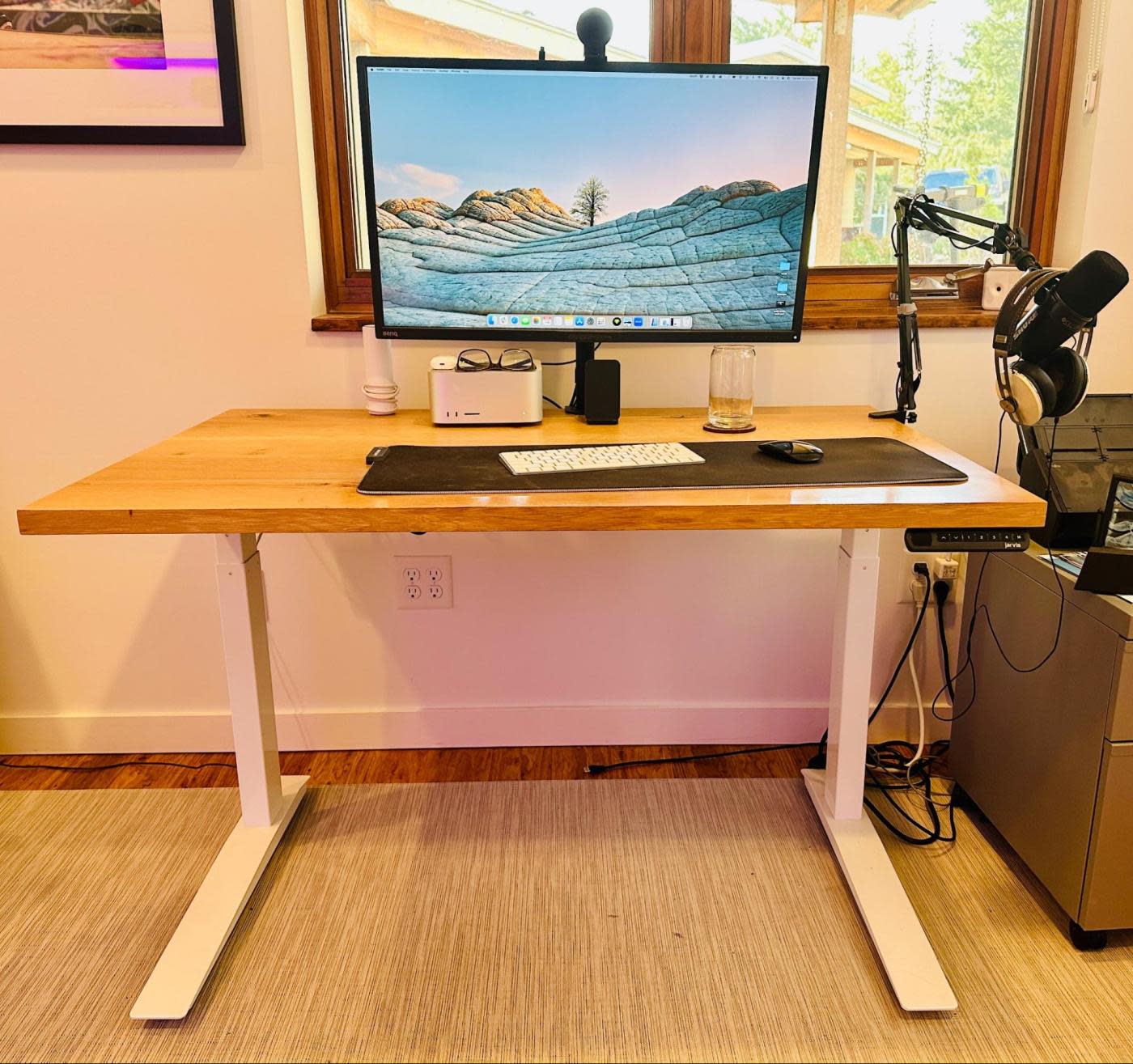
5. Go back to pen and paper
While the Zapier team is big on apps, an analog organization system can work wonders for some folks.
Take Switchboard's Deborah Kelson, for example. "I've tried different digital tools, but nothing beats pen and paper. I'm a visual learner and the act of writing improves recall. Writing things down during meetings also helps me stay focused and organized," Deborah says.
A good old-fashioned pad of paper keeps Deborah grounded:
"Each Monday morning, I savor the ritual of reviewing the prior week's list, bringing uncompleted items forward, and adding new items to the list. But even better than the ritual of reviewing is the satisfaction of checking items off the list."
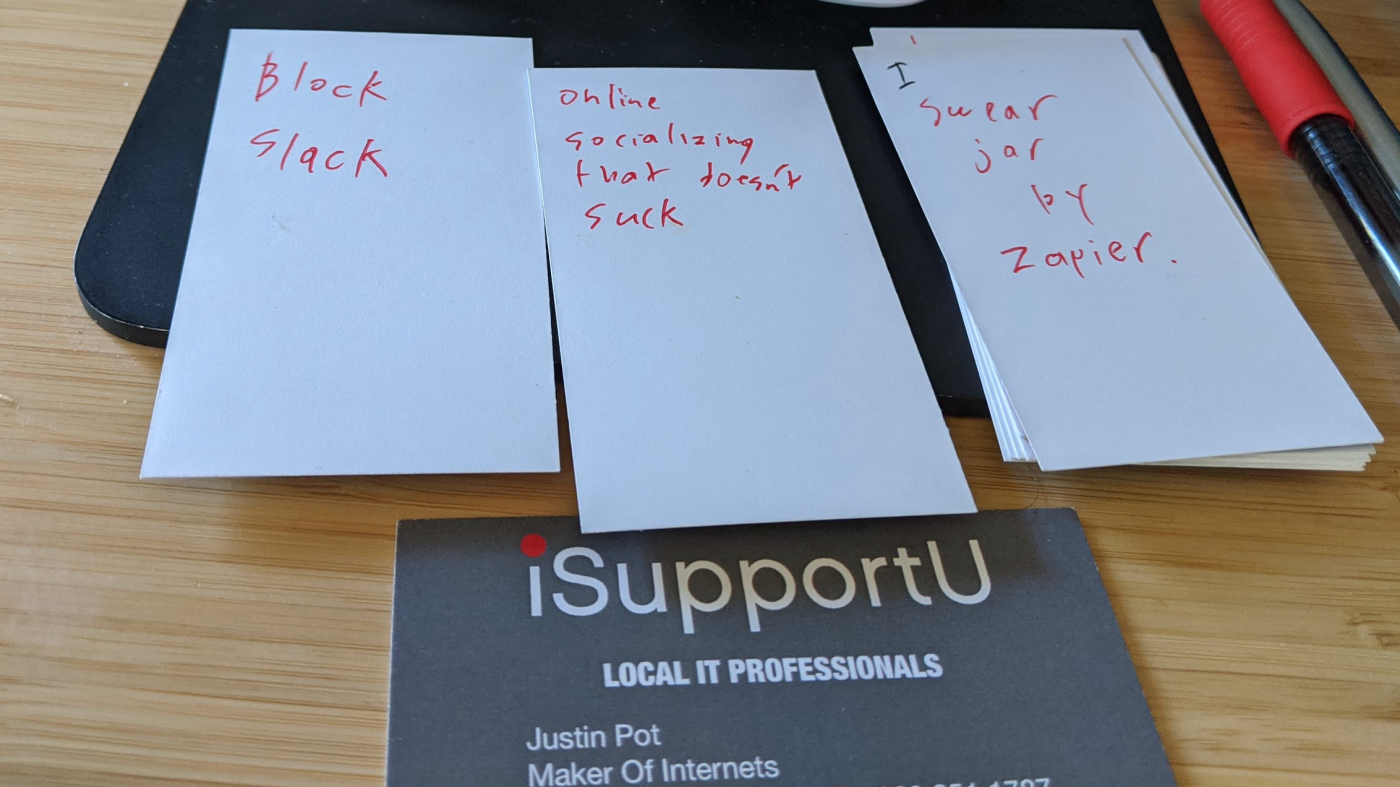
If you're not willing to go fully analog, you could also try combining pen and paper with your favorite apps to get the best of both worlds.
6. Take care of your mental health
Your mental health has a great impact on your workflow (it definitely does for me). We all want to be our most productive selves, but make sure to design your daily to-dos with your mental well-being in mind.
For Instrumentl's Gauri Manglik, setting aside time for reflection is the best way to work smarter, not harder.
"For me, this has manifested in different ways. Sometimes it's been a daily walk where I can clear my head and think about what I've done or want to do. Other times, it's been a weekly meeting with my team where we talk about what worked and didn't work in the past week, so we can make adjustments moving forward.
I think the most important thing is to make sure that you're making time for yourself—and not just during your 'me-time' (which should be an important part of any workday). This can include anything from scheduling time for yourself in your calendar to taking breaks throughout the day when needed."
Gaurav Nagani from Desku sticks to another fundamental self-care tactic: asking for help. "I ask for help when I need it. There's no shame in asking for help when you're stuck. It's better to ask for help than to struggle on your own," Gaurav says.
Two more strategies are setting more boundaries and tracking your mental health versus your productivity to find areas where you can get more support.
7. Turn off your notifications
Here's one of the easiest tactics on this list: turn off your notifications to cut down on distractions as you work. You can even automate the process by customizing your Do Not Disturb settings.
Sometimes, I go one step further and use the Zen Mode feature on my OnePlus phone to shut out access to any app for a little while. You gotta do what you gotta do to block out distractions.
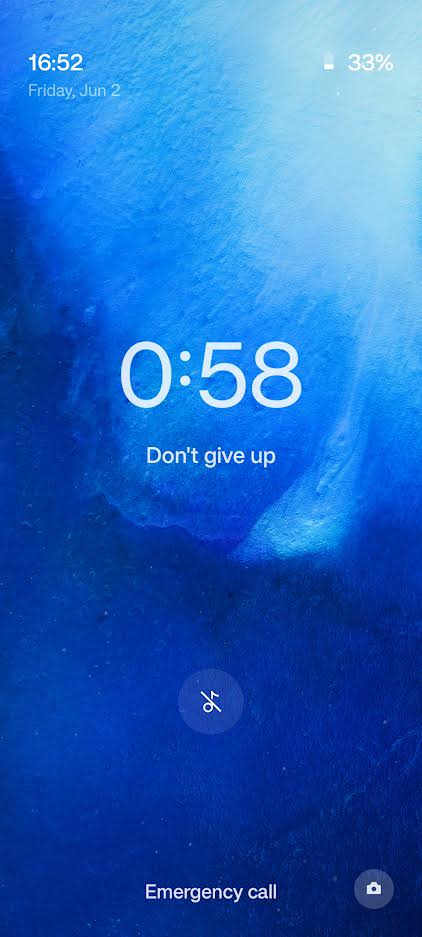
8. Get familiar with keyboard shortcuts
The benefits keyboard shortcuts offer you build over time. As you save a few seconds here and there throughout the day, that time saved adds up to minutes and hours.
Camille Fortuno from UpCity uses two of the most fundamental shortcuts to make everyday work faster: "I can say that I frequently use keyboard shortcuts to quickly move between jobs and projects. For instance, I spend quite less time manually right-clicking and choosing the copy/paste options when I use the Ctrl+C and Ctrl+V keyboard shortcuts to copy and paste the text."
If you want to really up your shortcut game, get to know the shortcuts for your favorite techniques and apps. The old reliable Alt+Tab and the Mac equivalent are great for switching between a lot of windows. You could also look into shortcuts for Gmail or your preferred email platform, which I use to reply to expert quote responses quickly.
9. Learn how to prioritize tasks
A fundamental aspect of working smarter is prioritizing tasks so they work for you. It's not something that comes naturally for most folks, so take a look at this rundown of nine prioritization frameworks to train your brain. A tip I like to use is to factor your mental state into prioritization. If you're in the mindset for one task over another and a deadline isn't a factor, consider swapping.
Sometimes prioritization involves going against the grain. You could try dropping tasks that don't matter in the grand scheme of things or use software like Akiflow to prioritize for you.
10. Design a to-do list that works for you
Speaking of tasks and their priority, don't be afraid to go against typical advice when designing your to-do list if it suits your approach to work.
For example, Gatis Viskers of Ambition Digital goes for low-priority tasks first to get rid of task paralysis. "Many people like to take on the highest priority tasks first, but I often find that actually ticking off the easiest tasks works a lot better. This way, I am able to significantly cut down my to-do list, and getting tasks done actually gives me a boost of energy and motivation," Gatis says. (This is how I like to approach my to-dos, too!)
TailoredPay's Dan Kroyter switches up his prospecting workflow to meet the needs of potential clients. He makes prospecting a habit, but he alternates when he does it. "Make calls on Wednesday morning and again Thursday afternoon, switching it up the following week. Rotating your outreach prevents you from missing people who aren't typically in the office in the mornings," he advises. You can apply this advice to any task that requires reaching out to new people, such as pitching new clients or sending out customer satisfaction surveys.
You also don't have to use a typical to-do list app. For example, my go-to task organization tool is Notion, where I can braindump tasks and swap them around easily. (Nicole Replogle takes a similar approach and has a to-do list template for you to get started with.) Maybe you'll get the most mileage out of Google Sheets or Gmail, even.
Many neurodivergent folks need to get creative with their to-do system. Jamie Irish shared a few to-do list apps that work well for them as someone with ADHD.
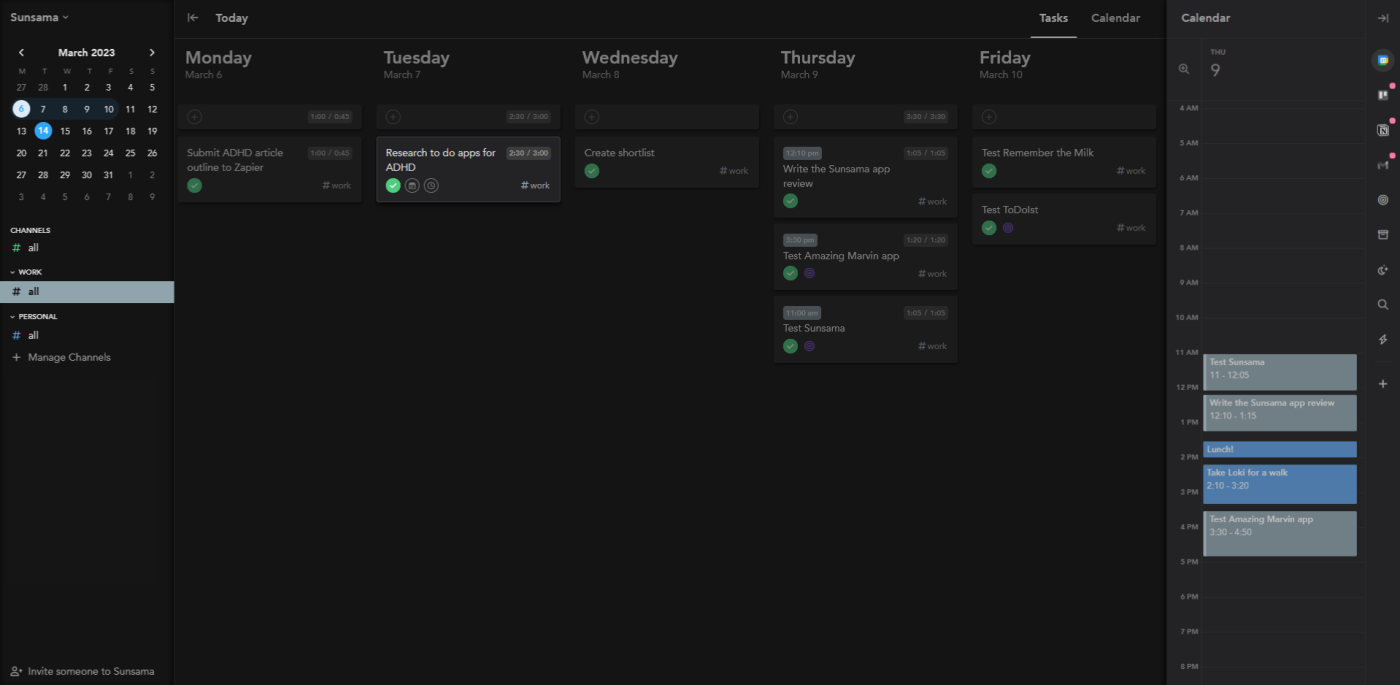
11. Delegate and outsource
You don't have to go it alone. If you feel like you have too much on your plate, look for spots in your to-do list that you can delegate or outsource to others.
Sofie Couwenbergh of Let Me Write That Down for You has a spreadsheet that builds outsourcing into her daily workflow:
"I have a Google Spreadsheet titled 'To Outsource' that I keep open while I work and have developed the habit of asking myself, each time I start a new task: 'Can and should I outsource this?'
If it's a task that makes sense to outsource, it goes on the sheet and is assigned a role. The role is either for a person I already have working for me (a virtual assistant, for example) or for someone I'm thinking of hiring in the future (a managing editor, for example).
Each month I check the sheet to see if I can assign something new to the people who are already helping me, and to determine whether I have enough tasks to hire for a new role."
At Loopex Digital, Maria Harutyunyan delegates operational tasks to her team when she needs to focus on high-level duties. While she started by trying to do everything, including social media and SEO, she soon realized she needed help. "I assembled a top-notch team of SEO specialists, content creators, and project managers who share my passion and vision. By delegating tasks to my talented teammates, I can focus on high-level strategy and business growth, knowing that the day-to-day operations are in capable hands," she explains.
Delegation is a habit to build over time with everyone on your team— here are some general delegation tips and advice for small business owners. And some of Zapier's workflows for collaboration can help you automatically assign tasks to others to keep your support squad working smoothly.
12. Add AI to the mix
Artificial intelligence is no longer a science fiction plot point: AI can absolutely help you speed up your daily tasks. Factors like ethics and accuracy give everyone—and each situation—different boundaries when it comes to embracing AI, but you're likely to find something that helps you work smarter. For example, I'm not big on using generative AI for my work, but I use Grammarly every day, which uses AI to check my grammar.
If you're stuck, here are some articles on how folks are actually using AI in the workplace:
6 examples of real businesses using DALL·E for visual content
AI at Zapier: How we use artificial intelligence to streamline work
AI in engineering: Transforming the way software engineers work
You can even automate your AI apps.
Working smart, not hard starts with you
You don't have to tread the beaten path to optimize your productivity. Instead, find methods that work with your personal needs, even if they don't fit typical advice. You're the boss of your workflow.
Related reading:
This article was originally published in 2014 by Belle Cooper. The most recent update was in June 2023.


